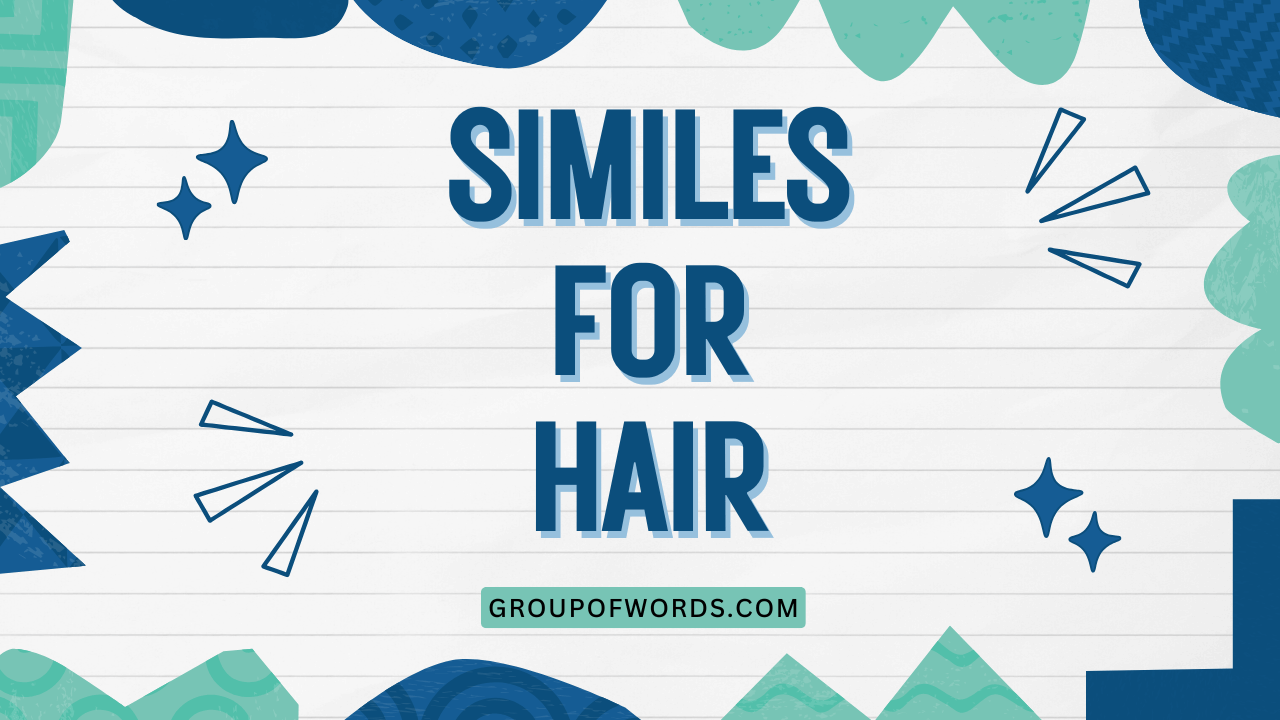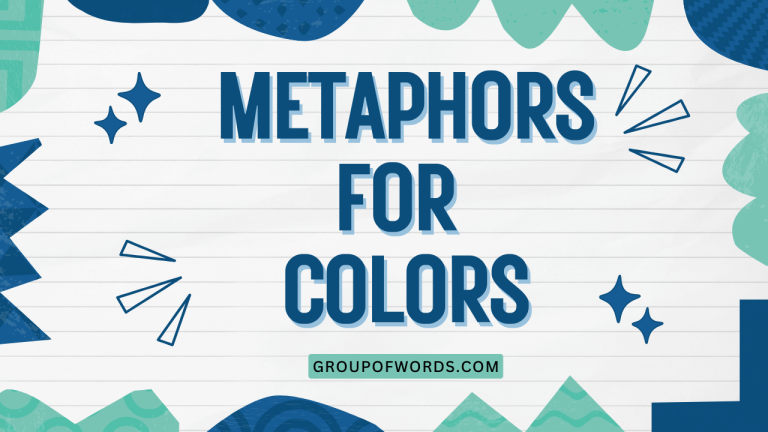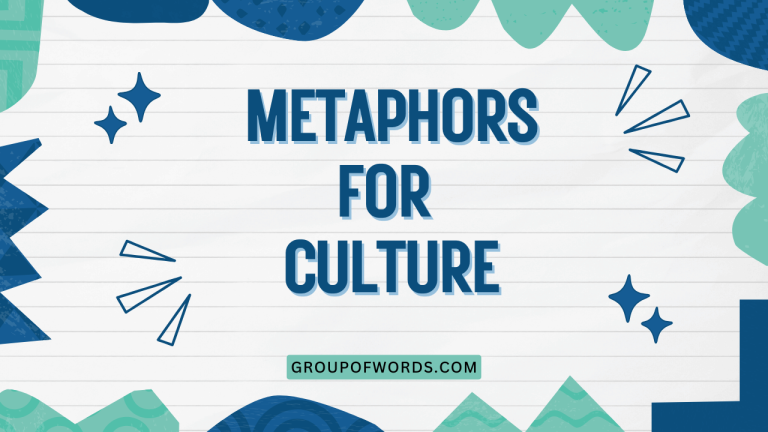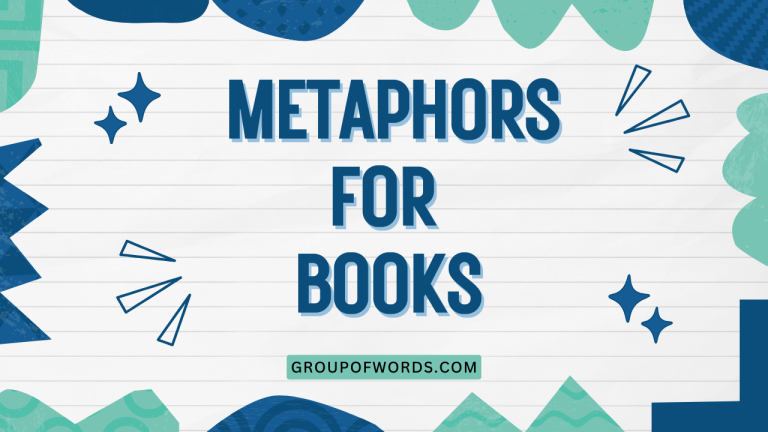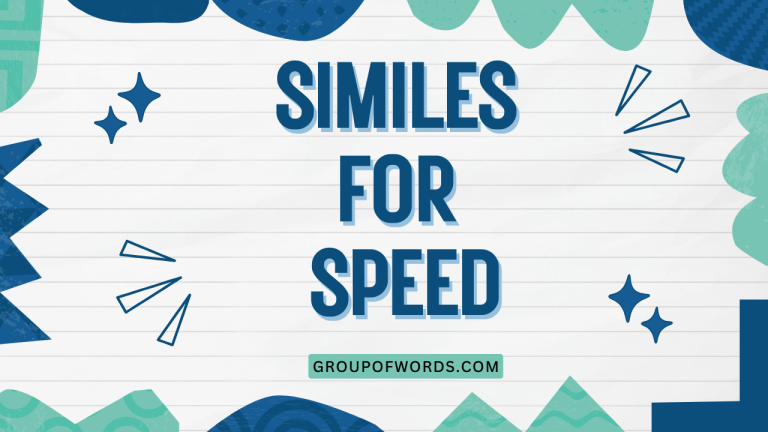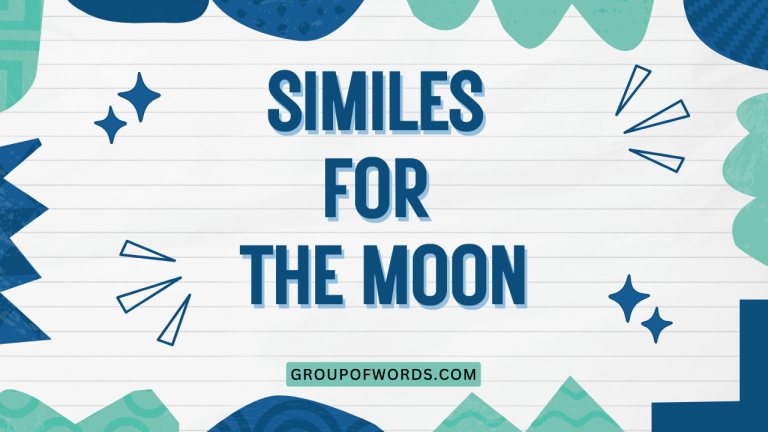Hair Similes: Describing Locks with Figurative Language
Similes are powerful tools in the English language, allowing us to create vivid and memorable descriptions by comparing one thing to another. When it comes to describing hair, similes can elevate your writing from the mundane to the magnificent.
Understanding how to construct and use similes effectively enhances your ability to paint a picture with words. This article will delve into the world of hair similes, exploring their structure, usage, and impact.
Whether you’re a student, writer, or simply someone who enjoys playing with language, this guide will provide you with the knowledge and inspiration to describe hair in captivating ways.
This article is designed to benefit English language learners, creative writers, and anyone looking to improve their descriptive writing skills. We’ll cover everything from basic definitions to advanced techniques, ensuring that you have a solid understanding of how to use similes to describe hair effectively.
Table of Contents
- Definition of Simile
- Structural Breakdown of Hair Similes
- Types of Hair Similes
- Examples of Hair Similes
- Usage Rules for Hair Similes
- Common Mistakes with Hair Similes
- Practice Exercises
- Advanced Topics in Hair Similes
- Frequently Asked Questions
- Conclusion
Definition of Simile
A simile is a figure of speech that directly compares two different things using the words “like” or “as.” The purpose of a simile is to enhance the description of one thing by drawing a parallel to another, creating a more vivid and relatable image in the reader’s mind. In the context of describing hair, similes allow us to go beyond simple adjectives and evoke a sense of texture, color, movement, and overall appearance.
Similes are a type of figurative language, which means they use words or expressions with a meaning that is different from the literal interpretation. This allows for greater creativity and expressiveness in writing. Unlike metaphors, which state that one thing *is* another, similes only suggest a resemblance. For example, instead of saying “Her hair was a waterfall,” a simile would say “Her hair was like a waterfall.”
The function of a simile is to make writing more engaging and descriptive. By drawing comparisons to familiar objects or concepts, similes can help readers visualize and understand the subject being described more easily.
They can also add emotional depth and create a specific mood or tone.
Structural Breakdown of Hair Similes
The basic structure of a simile includes three key elements: the subject being described (in this case, hair), the word “like” or “as,” and the object or concept to which the subject is being compared. Understanding this structure is crucial for creating effective and meaningful similes.
The formula for a simile is: Subject + “like” or “as” + Object of Comparison.
Let’s break down this structure with some examples:
- Her hair (subject) is like (connecting word) spun gold (object of comparison).
- His hair (subject) is as (connecting word) dark as night (object of comparison).
- The child’s hair (subject) was like (connecting word) a tangled bird’s nest (object of comparison).
The object of comparison should be something that shares a similar characteristic with the subject. For example, if you want to describe hair as being shiny, you might compare it to something else that is known for its shine, such as glass or polished metal.
The choice between “like” and “as” is often a matter of personal preference, but “as” is typically used when comparing an attribute or quality directly. For example, “Her hair is as soft as silk” emphasizes the softness of the hair. “Like” can be used more broadly to suggest a general resemblance. For example, “Her hair is like a flowing river” suggests a resemblance in movement and appearance.
Types of Hair Similes
Hair similes can be categorized based on the qualities they emphasize, such as color, texture, shape, and movement. By understanding these categories, you can choose the most appropriate simile to convey the specific image you want to create.
Similes Describing Hair Color
These similes focus on the hue and shade of the hair, often drawing comparisons to natural elements, precious metals, or other colorful objects.
Similes Describing Hair Texture
These similes emphasize the feel of the hair, whether it’s soft, rough, smooth, or coarse. They often compare hair to fabrics, natural materials, or other tactile sensations.
Similes Describing Hair Shape
These similes focus on the form and structure of the hair, such as curly, straight, wavy, or coiled. They often compare hair to objects with similar shapes or patterns.
Similes Describing Hair Movement
These similes emphasize how the hair moves and flows, capturing its dynamism and fluidity. They often compare hair to natural phenomena like water, wind, or fire.
Examples of Hair Similes
Here are some examples of hair similes, categorized by the qualities they emphasize. Each table contains a variety of similes to inspire your own writing.
Table 1: Similes Describing Hair Color
The following table provides examples of similes that focus on describing the color of hair. These similes use comparisons to various objects and concepts to create a vivid image of the hair’s hue.
| Simile | Explanation |
|---|---|
| Her hair was like spun gold. | Describes hair that is bright and golden. |
| His hair was as black as night. | Describes hair that is very dark. |
| Her hair was like a raven’s wing. | Another way to describe very dark, glossy hair. |
| His hair was as red as fire. | Describes bright red hair. |
| Her hair was like autumn leaves. | Describes hair with a mix of red, brown, and gold tones. |
| His hair was as white as snow. | Describes white or gray hair. |
| Her hair was like a field of wheat. | Describes blonde or golden-brown hair. |
| His hair was as brown as chocolate. | Describes rich, dark brown hair. |
| Her hair was like copper wire. | Describes reddish-brown hair with a metallic sheen. |
| His hair was as gray as a stormy sky. | Describes gray hair with a dark, somber tone. |
| Her hair was like sunshine on water. | Describes bright, shimmering blonde hair. |
| His hair was as dark as espresso. | Describes very dark brown or black hair. |
| Her hair was like honey. | Describes golden or light brown hair with a warm tone. |
| His hair was as silver as moonlight. | Describes silver or light gray hair. |
| Her hair was like cherry cola. | Describes dark brown hair with red undertones. |
| His hair was as auburn as fallen leaves. | Describes reddish-brown hair, similar to autumn foliage. |
| Her hair was like platinum. | Describes very light blonde or silver hair. |
| His hair was as golden as a sunset. | Describes golden blonde hair with a warm glow. |
| Her hair was like burnt umber. | Describes a dark reddish-brown hair color. |
| His hair was as bronze as an ancient statue. | Describes a metallic brown hair color. |
| Her hair was like a lion’s mane. | Describes thick, golden-brown hair. |
| His hair was as jet black as obsidian. | Describes very dark, shiny black hair. |
| Her hair was like caramel drizzle. | Describes light brown hair with warm, golden highlights. |
Table 2: Similes Describing Hair Texture
The following table provides examples of similes that focus on describing the texture of hair. These similes use comparisons to various materials and sensations to convey how the hair feels.
| Simile | Explanation |
|---|---|
| Her hair was as soft as silk. | Describes hair that is smooth and delicate. |
| His hair was like steel wool. | Describes hair that is rough and coarse. |
| Her hair was like a tangled bird’s nest. | Describes hair that is messy and unkempt. |
| His hair was as smooth as glass. | Describes hair that is sleek and shiny. |
| Her hair was like a cloud of cotton. | Describes hair that is light and fluffy. |
| His hair was as wiry as a Brillo pad. | Describes hair that is stiff and coarse. |
| Her hair was like velvet. | Describes hair that is soft and luxurious. |
| His hair was as prickly as a cactus. | Describes hair that is rough and sharp to the touch. |
| Her hair was like a waterfall of feathers. | Describes hair that is light, flowing, and soft. |
| His hair was as coarse as horsehair. | Describes hair that is very rough and thick. |
| Her hair was like spun sugar. | Describes hair that is fine and delicate. |
| His hair was as brittle as dry straw. | Describes hair that is easily broken or damaged. |
| Her hair was like dandelion fluff. | Describes hair that is light and airy. |
| His hair was as slick as motor oil. | Describes hair that is greasy or heavily styled. |
| Her hair was like a whisper of angel hair pasta. | Describes fine and delicate hair. |
| His hair was as rough as sandpaper. | Describes very coarse and abrasive hair. |
| Her hair was like a downy chick. | Describes soft and fine baby hair. |
| His hair was as unruly as a bramble patch. | Describes tangled and difficult-to-manage hair. |
| Her hair was like a cashmere blanket. | Describes hair that feels exceptionally soft and warm. |
| His hair was as tough as rope. | Describes strong and resilient hair. |
| Her hair was like a spider’s web, fine and delicate. | Describes hair that is extremely fine and easily tangled. |
| His hair was as rough as tree bark. | Describes very coarse and textured hair. |
| Her hair was like a warm, comforting cloud. | Describes hair that is soft, voluminous, and inviting. |
Table 3: Similes Describing Hair Shape
The following table provides examples of similes that focus on describing the shape of hair. These similes use comparisons to various forms and structures to illustrate the hair’s style and pattern.
| Simile | Explanation |
|---|---|
| Her hair was like a cascade of curls. | Describes hair with many flowing curls. |
| His hair was as straight as a ruler. | Describes hair that is perfectly straight. |
| Her hair was like a tangled mass of vines. | Describes curly or unruly hair that is intertwined. |
| His hair was as wavy as the ocean. | Describes hair with gentle, flowing waves. |
| Her hair was like a halo of ringlets. | Describes hair with tight, defined curls around the face. |
| His hair was as spiky as a hedgehog. | Describes hair that is styled to stand up in sharp points. |
| Her hair was like a crown of braids. | Describes hair that is intricately braided and styled. |
| His hair was as flat as a pancake. | Describes hair that lacks volume and lies close to the head. |
| Her hair was like a coil of springs. | Describes tightly coiled or kinky hair. |
| His hair was as windswept as a desolate moor. | Describes hair that appears messy and tousled, as if by the wind. |
| Her hair was like a carefully sculpted sculpture. | Describes hair that is meticulously styled and shaped. |
| His hair was as layered as a geological formation. | Describes hair with distinct layers of varying lengths. |
| Her hair was like a fountain of waves. | Describes hair that cascades down in large, flowing waves. |
| His hair was as neatly parted as a freshly plowed field. | Describes hair with a very precise and distinct part. |
| Her hair was like Medusa’s head, a mass of wild curls. | Describes extremely unruly and abundant curly hair. |
| His hair was as sculpted as a Roman statue. | Describes carefully styled and well-defined hair. |
| Her hair was like a waterfall of crimps. | Describes hair that is tightly crimped. |
| His hair was as slicked back as a 1950s greaser. | Describes hair that is smoothly styled and flattened back. |
| Her hair was like a bouffant, voluminous and round. | Describes a voluminous and rounded hairstyle. |
| His hair was as close-cropped as a soldier’s cut. | Describes very short and neatly trimmed hair. |
| Her hair was like a rope of twisted strands. | Describes hair that is braided or twisted into a thick rope-like shape. |
| His hair was as unruly as a field of wheat in a storm. | Describes hair that is messy and difficult to control. |
Table 4: Similes Describing Hair Movement
The following table provides examples of similes that focus on describing the movement of hair. These similes use comparisons to natural phenomena and flowing objects to capture the dynamism of the hair.
| Simile | Explanation |
|---|---|
| Her hair flowed like a river. | Describes hair that moves smoothly and continuously. |
| His hair danced in the wind like flames. | Describes hair that moves erratically and energetically. |
| Her hair swayed like seaweed in the ocean. | Describes hair that moves gently and rhythmically. |
| His hair fell like a curtain. | Describes hair that hangs down in a smooth, unbroken sheet. |
| Her hair bounced like a spring with every step. | Describes hair that is lively and full of bounce. |
| His hair whipped around his face like angry snakes. | Describes hair that is being tossed violently in the wind. |
| Her hair rippled like a field of grass. | Describes hair that moves in gentle waves. |
| His hair cascaded down his back like a waterfall. | Describes hair that flows down in a large, abundant stream. |
| Her hair swirled around her head like a halo of smoke. | Describes hair that moves in a circular, ethereal way. |
| His hair fluttered in the breeze like butterfly wings. | Describes hair that moves lightly and delicately. |
| Her hair undulated like a gentle wave. | Describes hair moving with a soft, rolling motion. |
| His hair swayed like tall grass in a meadow. | Describes hair that moves rhythmically and gracefully. |
| Her hair swished like a silken curtain. | Describes hair that moves with a soft and luxurious sound. |
| His hair bounced like a playful puppy. | Describes hair with a lively and energetic bounce. |
| Her hair drifted like fallen leaves. | Describes hair that moves slowly and gracefully. |
| His hair billowed like sails in the wind. | Describes hair that puffs out and swells with movement. |
| Her hair floated like a wisp of cloud. | Describes hair that moves lightly and ethereally. |
| His hair tumbled around his shoulders like a playful stream. | Describes hair that moves with a lively and carefree motion. |
| Her hair swayed gently, like willow branches in a breeze. | Describes hair that moves gracefully and fluidly. |
| His hair shifted like sand dunes in the desert wind. | Describes hair with a subtle and shifting movement. |
| Her hair moved like ribbons in a dance. | Describes hair with a flowing and graceful movement. |
| His hair responded to the wind like a field of grain. | Describes hair that moves rhythmically with the wind. |
Usage Rules for Hair Similes
Using similes effectively requires attention to detail and an understanding of the nuances of language. Here are some key rules to keep in mind when crafting hair similes:
- Ensure the comparison is relevant: The object of comparison should share a meaningful characteristic with the hair being described. A simile that compares hair to something completely unrelated will be confusing and ineffective.
- Be specific: Vague similes are less impactful. Instead of saying “Her hair was like something shiny,” specify what the hair is like. For example, “Her hair was like polished silver.”
- Consider the context: The tone and style of your writing should influence the type of similes you use. A formal piece might call for more sophisticated comparisons, while a casual piece can be more playful.
- Avoid clichés: Overused similes can make your writing seem unoriginal. Try to come up with fresh and imaginative comparisons.
- Use sensory details: Engage the reader’s senses by using similes that evoke specific sights, sounds, textures, and even smells.
Exceptions: Sometimes, breaking the rules can lead to creative and unexpected results. However, it’s important to understand the rules before you break them. Experiment with unconventional comparisons, but always ensure that the simile still makes sense within the context of your writing.
Common Mistakes with Hair Similes
Even experienced writers can make mistakes when using similes. Here are some common errors to watch out for:
- Using clichés: Overused similes like “hair as soft as silk” can make your writing seem uninspired.
- Creating illogical comparisons: Ensure that the comparison makes sense. For example, “Her hair was like a brick wall” doesn’t convey a clear or meaningful image.
- Being too vague: Similes like “Her hair was like something nice” lack detail and impact.
- Mixing metaphors and similes: Avoid combining the two figures of speech in a way that creates confusion. For example, “Her hair was a waterfall, like a golden river” is redundant and awkward.
Here are some examples of common mistakes and how to correct them:
| Incorrect | Correct | Explanation |
|---|---|---|
| Her hair was like something beautiful. | Her hair was like a field of sunflowers. | The corrected simile is more specific and evocative. |
| His hair was like a rock. | His hair was as hard as rock. | The corrected simile uses a more appropriate comparison, focusing on texture. |
| Her hair was a waterfall, like a river. | Her hair was like a waterfall. | The corrected sentence avoids mixing a metaphor with a simile. |
| His hair was as soft as hair. | His hair was as soft as a cloud. | The corrected simile provides a meaningful comparison. |
Practice Exercises
Test your understanding of hair similes with these practice exercises. Each exercise includes multiple questions of varying difficulty.
Exercise 1: Identifying Similes
Identify the similes in the following sentences:
| Question | Answer |
|---|---|
| 1. Her hair was like a cascade of chocolate. | like a cascade of chocolate |
| 2. His hair was dark and mysterious. | No simile present. |
| 3. Her hair was as bright as the sun. | as bright as the sun |
| 4. His hair was a tangled mess. | No simile present. |
| 5. Her hair was like a spider’s web, fine and delicate. | like a spider’s web |
| 6. His hair was as stiff as a board. | as stiff as a board |
| 7. Her hair was a flowing river of gold. | No simile present. |
| 8. His hair was like tangled weeds. | like tangled weeds |
| 9. Her hair was as red as fire. | as red as fire |
| 10. His hair was neatly combed. | No simile present. |
Exercise 2: Completing Similes
Complete the following similes with an appropriate comparison:
| Question | Answer |
|---|---|
| 1. Her hair was as soft as _____. | a feather |
| 2. His hair was like _____. | a raven’s wing |
| 3. Her hair flowed like _____. | a waterfall |
| 4. His hair was as wiry as _____. | steel wool |
| 5. Her hair was like _____, fine and delicate. | spun sugar |
| 6. His hair was as dark as _____. | night |
| 7. Her hair was like _____ in the wind. | dancing flames |
| 8. His hair was as smooth as _____. | glass |
| 9. Her hair was like a crown of _____. | braids |
| 10. His hair was as unruly as _____. | a bramble patch |
Exercise 3: Writing Your Own Similes
Write your own similes to describe the following hair characteristics:
| Characteristic | Example Answer |
|---|---|
| 1. Blonde hair | Her hair was like sunshine on a summer day. |
| 2. Curly hair | His hair was like a coil of springs. |
| 3. Long hair | Her hair was as long as Rapunzel’s. |
| 4. Gray hair | His hair was like a winter frost. |
| 5. Soft hair | Her hair was as soft as a kitten’s fur. |
| 6. Thick hair | His hair was like a lion’s mane. |
| 7. Wavy hair | Her hair was like gentle ocean waves. |
| 8. Black hair | His hair was as black as a moonless night. |
| 9. Red hair | Her hair was like burning embers. |
| 10. Frizzy hair | His hair was like a ball of cotton candy. |
Advanced Topics in Hair Similes
For advanced learners, exploring more complex aspects of hair similes can further enhance your writing skills.
Extended Similes
An extended simile is a simile that is developed over several sentences or even paragraphs. This allows for a more detailed and nuanced comparison.
Example: “Her hair was like a flowing river, cascading down her back in a torrent of dark curls. It shimmered in the sunlight, reflecting the light like a thousand tiny mirrors, each one catching and scattering the brilliance of the day.”
Subverted Similes
A subverted simile is a simile that deliberately defies expectations or creates an unexpected comparison. This can be used for humorous or ironic effect.
Example: “His hair was like a perfectly sculpted masterpiece… of a bad hair day.”
Using Similes to Create Tone and Mood
The choice of similes can significantly impact the tone and mood of your writing. For example, using similes that evoke natural imagery can create a sense of peace and tranquility, while using similes that involve harsh or unpleasant comparisons can create a sense of tension or unease.
Frequently Asked Questions
- What is the difference between a simile and a metaphor?
A simile compares two things using “like” or “as,” while a metaphor states that one thing *is* another. Similes are generally more explicit comparisons, while metaphors are more implicit and suggestive. For example, “Her hair is like spun gold” (simile) versus “Her hair is spun gold” (metaphor).
- How can I avoid using clichés in my similes?
To avoid clichés, try to think outside the box and come up with unique and unexpected comparisons. Consider the specific qualities you want to emphasize and brainstorm objects or concepts that share those qualities in a less obvious way. Use a thesaurus to find alternative words and phrases.
- Can a simile be too long?
Yes, a simile can be too long if it becomes overly detailed or convoluted. The goal is to enhance the description, not to distract from it. Keep your similes concise and focused, and avoid unnecessary embellishments.
- How do I choose between “like” and “as” in a simile?
Generally, “as” is used when comparing specific qualities, while “like” is used for more general resemblances. However, the choice is often a matter of personal preference and stylistic flow. Experiment with both options to see which sounds better in your writing.
- Is it okay to use multiple similes in a single paragraph?
Yes, but use them sparingly. Too many similes can make your writing seem cluttered and overwhelming. Use similes strategically to highlight key details and create a vivid impression, but avoid overdoing it.
- What if I can’t think of a good simile?
If you’re struggling to come up with a simile, try brainstorming a list of words and phrases related to the subject you’re describing. Consider the qualities you want to emphasize and think about objects or concepts that share those qualities. You can also try using online simile generators or consulting a thesaurus for inspiration.
- How important is it to use similes when describing hair?
While not essential, similes can significantly enhance your descriptions of hair by adding depth, color, and texture. They allow you to go beyond simple adjectives and create a more vivid and memorable image in the reader’s mind. Using similes effectively can elevate your writing from the mundane to the magnificent.
- Can similes be used in all types of writing?
Similes are versatile and can be used in a wide range of writing styles, from creative writing to descriptive essays. However, it’s important to consider the context and audience. In formal or technical writing, similes should be used sparingly and with careful consideration.
Conclusion
Mastering the art of hair similes involves understanding their structure, types, and usage rules. By practicing and experimenting with different comparisons, you can significantly enhance your descriptive writing skills and create vivid, memorable images in the reader’s mind.
Remember to be specific, avoid clichés, and consider the context of your writing. With a little creativity and attention to detail, you can use hair similes to transform your writing from the ordinary to the extraordinary.
The key takeaways from this article are the importance of relevant comparisons, the power of sensory details, and the need to avoid overused expressions. Continue to practice writing your own similes and analyzing the similes used by other writers.
With dedication and a keen eye for detail, you can become a master of hair similes and unlock the full potential of descriptive language.
